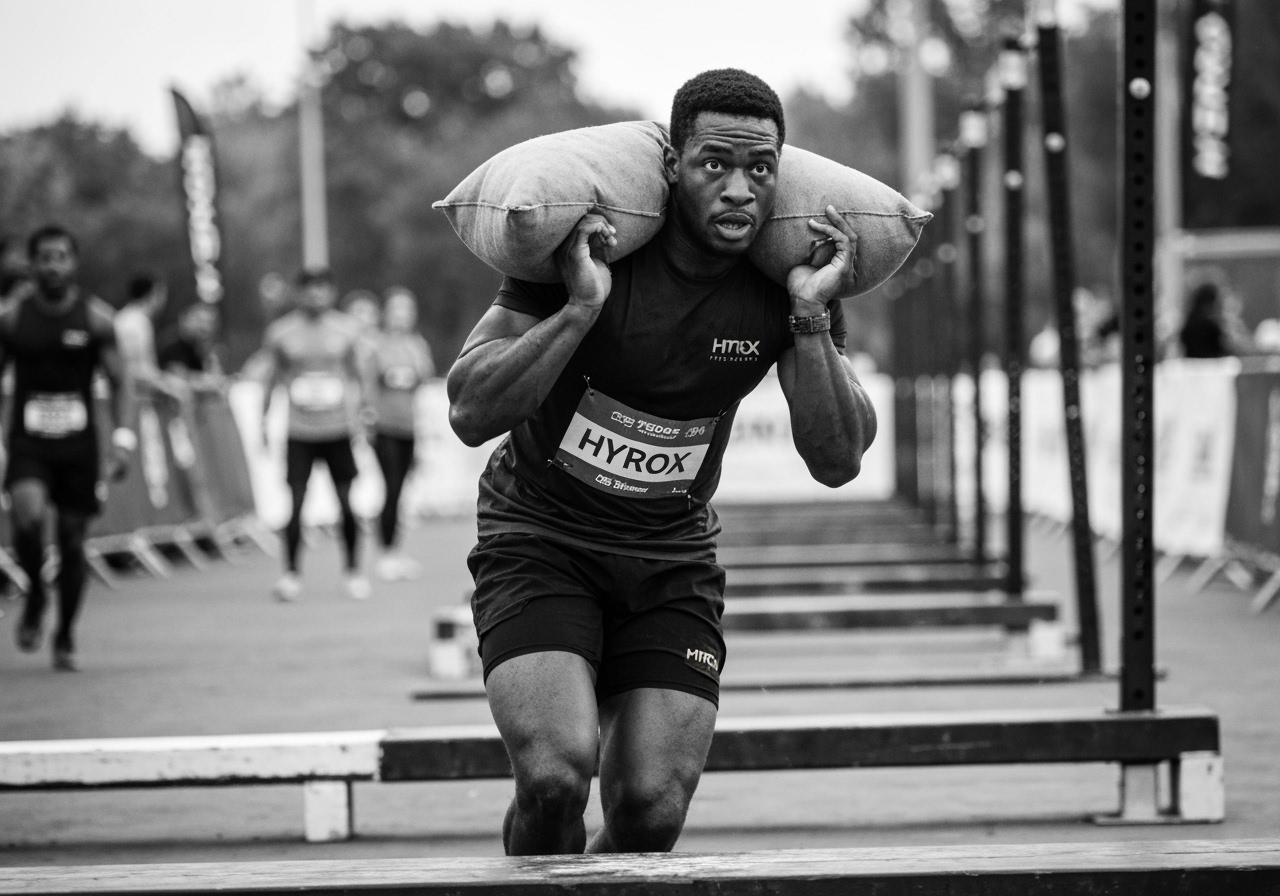
Running in HYROX is deceptively tough. It's not just about covering 8 x 1km runs — it's about doing them after sled pushes, wall balls, and burpees. Your legs are heavy, your lungs are burning, and yet, you still need to hold a consistent pace.
The Secret Weapon to Faster HYROX Runs
That's where interval training comes in. By breaking runs into targeted efforts with structured recovery, you condition your body to tolerate fatigue, recover faster, and sustain speed under pressure.
Below, you'll find 3 interval workouts designed specifically for HYROX athletes — tested and trusted to translate directly to race-day performance.

1. The Threshold Builder – "Sustained Pace Under Fatigue"
This workout trains you to maintain a steady pace even when your body is screaming at you to slow down.
Workout:
- Warm up: 10 minutes easy jog
- Main set: 6 x 1km at target HYROX race pace (with 90 sec jog/walk between reps)
- Cool down: 5 minutes light jog
Why it works:
HYROX punishes athletes who go out too hard and fade later. This session locks in your sustainable pace so you can hold steady through all 8 runs.
💡 Pro tip: Run each interval slightly faster than "comfortable" but not at max effort. This should feel like the pace you'd use on race day.
2. The VO₂ Max Booster – "Turn Your Legs Over Faster"
If you want to shave minutes off your HYROX run time, you need to raise your ceiling — your VO₂ max. These short, sharp intervals push your cardiovascular system to adapt.
Workout:
- Warm up: 10 minutes jog + 3 strides
- Main set: 12 x 400m at 5K pace (or slightly faster) with 60 sec recovery
- Cool down: 5–10 minutes jog
Why it works:
Running economy improves when you teach your body to handle faster paces. Even though HYROX runs are longer, these high-intensity efforts make your race pace feel easier.
💡 Pro tip: Keep recoveries honest — don't walk them all. Jog slowly to keep your heart rate up.

3. The HYROX Simulation – "Train Like Race Day"
Intervals are most effective when they mimic competition demands. This session alternates between runs and strength movements — just like HYROX.
Workout:
Why it works:
You train your body to transition between strength and running, which is the defining challenge of HYROX. The strength moves spike your heart rate and fatigue your muscles, forcing you to adapt mid-run.
💡 Pro tip: Rotate the functional exercises each week to simulate different race demands.
Common Mistakes with Interval Training (and Fixes)
| Mistake | Why It Hurts | Fix |
|---|---|---|
| Running too hard on every rep | Leads to burnout and poor recovery | Stick to your target pace — consistent > all-out |
| Skipping recoveries | Limits adaptation and quality of later reps | Use recovery wisely, don't cut it short |
| Ignoring warm-up/cool down | Higher injury risk and less efficiency | Always add 10 minutes easy before & after |
| Only running flat | HYROX is about resilience, not just speed | Add incline/treadmill runs to mimic fatigue |

Final Thoughts
Interval training isn't just a running hack — it's a HYROX necessity. By combining threshold runs, speed work, and simulation sessions, you'll build the exact blend of endurance and intensity the race demands.
Stick with these 3 workouts for 6–8 weeks, and you'll notice your run times tighten, your recovery improve, and your confidence soar when it matters most — on the competition floor.